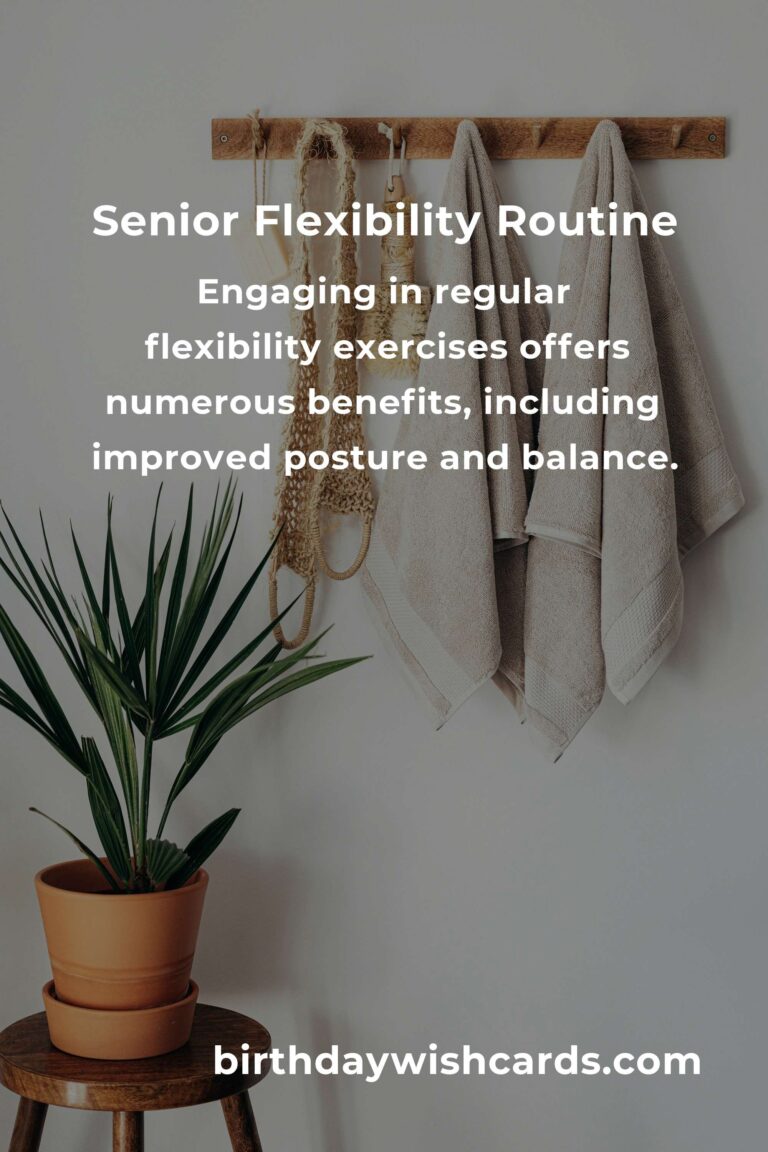
As we age, maintaining flexibility becomes crucial for overall health and mobility. A consistent flexibility routine can help seniors stay active, reduce the risk of injury, and improve their quality of life. This article explores an effective home flexibility routine specifically designed for seniors.
Why Flexibility is Important for Seniors
Flexibility is the ability of your joints to move through their full range of motion. For seniors, maintaining flexibility can help in performing daily activities with ease, such as bending, reaching, or even walking. As we age, our muscles and joints tend to stiffen, making these activities more challenging. By incorporating a flexibility routine, seniors can improve their mobility and reduce the risk of falls and other injuries.
Benefits of a Flexibility Routine
Engaging in a regular flexibility routine offers numerous benefits for seniors, including:
- Increased range of motion
- Improved posture
- Enhanced balance and coordination
- Reduced muscle tension and soreness
- Improved circulation
- Better mental health and relaxation
Preparing for Your Flexibility Routine
Before starting any new exercise routine, it’s important for seniors to consult with a healthcare provider, especially if they have existing health conditions. Once cleared, seniors should ensure they have a safe and comfortable space to exercise, with a non-slip surface and supportive footwear. It’s also beneficial to have a chair or wall nearby for support if needed.
Effective Flexibility Exercises for Seniors
Here are some simple and effective exercises that can be easily performed at home:
Neck Stretch
Sit or stand with a straight back. Slowly tilt your head towards your right shoulder, feeling a gentle stretch along the left side of your neck. Hold for 15-30 seconds, then switch sides.
Shoulder Rolls
Sit or stand with your arms at your sides. Gently roll your shoulders forward in a circular motion five times, then reverse the direction for another five rolls.
Seated Torso Twist
Sit on a chair with your feet flat on the floor. Place your right hand on the back of the chair and gently twist your torso to the right. Hold for 15-30 seconds, then repeat on the left side.
Hamstring Stretch
Stand behind a chair and hold onto it for support. Extend your right leg forward, keeping your heel on the ground and your toes pointing up. Bend your left knee slightly and lean forward, feeling a stretch in your right hamstring. Hold for 15-30 seconds, then switch legs.
Calf Stretch
Stand facing a wall with your hands pressed against it. Step back with your right foot, keeping it straight and your heel on the ground. Bend your left knee slightly and lean in towards the wall, stretching your right calf. Hold for 15-30 seconds, then switch legs.
Tips for a Successful Flexibility Routine
To maximize the benefits of your flexibility routine, consider the following tips:
- Warm up with light aerobic activity before stretching.
- Focus on breathing deeply and relaxing into each stretch.
- Avoid bouncing or overstretching to prevent injury.
- Incorporate flexibility exercises into your routine at least 3-5 times a week.
- Listen to your body and only stretch to the point of mild discomfort.
Conclusion
Implementing a home flexibility routine can significantly improve a senior’s mobility, balance, and overall well-being. With consistent practice, seniors can enjoy a more active and independent lifestyle. Remember, it’s never too late to start taking care of your body through flexibility exercises.
Flexibility is crucial for seniors to maintain overall health and mobility.
A consistent flexibility routine can reduce the risk of injury for seniors.
Engaging in regular flexibility exercises offers numerous benefits, including improved posture and balance.
Before starting a new exercise routine, seniors should consult with a healthcare provider.
Simple exercises like neck stretches and shoulder rolls can be effective for seniors.
#SeniorHealth #FlexibilityRoutine #ActiveLifestyle #HealthyAging













